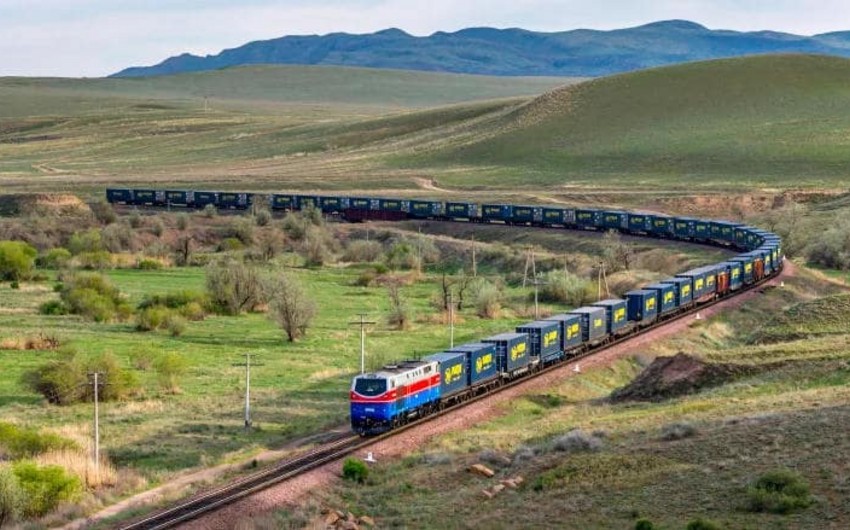The Middle Corridor has demonstrated a more than five-fold increase in cargo flows over the past four years, confirming its potential to become a major land bridge for Eurasian trade, reads an analytical review on the prospects for deepening economic cooperation between Azerbaijan and Kazakhstan, prepared by the Astana International Financial Center (AIFC) and the Institute for Development and Diplomacy (IDD) under ADA University, Report informs.
"Transport and logistics play an important role in Kazakhstan-Azerbaijani cooperation and are based on the strategic position of the two countries along the Middle Corridor, which connects China with Europe. Although the Middle Corridor has been operating for many years, its importance has increased significantly in the current geopolitical situation, which has contributed to the diversification of land routes between China and Europe," reads the review.
According to the review, this route is of great importance in the development of trade and economic relations between Kazakhstan and Azerbaijan: "The Middle Corridor is a strategically important multimodal route passing through Kazakhstan, Azerbaijan, Georgia and Türkiye and plays a leading role in the implementation of both the European Union's Global Gateway strategy and the optimization of China's Belt and Road Initiative. In recent years, the delivery time of goods along the route has been reduced from 38-53 days to 19-23 days. The goal is to reduce this figure to 15 days."
The authors note that the Middle Corridor has a number of advantages compared to the Northern Corridor, which passes through Russia. "In the context of geopolitical tensions and sanctions, transit via the Northern Route is subject to risks of delays and increased controls. In addition, dependence on a single transit state poses a threat to the stability of supply chains. In contrast, the Middle Corridor provides a more diversified and sustainable route that reduces the risks associated with geopolitical instability," says the review.
The Middle Corridor is showing a significant increase in transport volumes, which underlines its growing strategic importance within the framework of the modern Silk Road: in 2021, the volume of transport along the corridor amounted to approximately 840 thousand tons, and in 2024 it reached 4.5 million tons, an increase of 435%.
"The parties involved in the development of the route aim to increase the total annual volume of transportation to 10 million tons by 2030. This requires investment in infrastructure, harmonization of customs procedures and coordination of logistics between Kazakhstan, Azerbaijan, Georgia and Türkiye. In just four years, the Middle Corridor has demonstrated a more than fivefold increase in cargo flows, confirming its potential to become a key land bridge for Eurasian trade against the backdrop of restructuring of global supply chains and geopolitical changes," it says.
The authors of the review believe that the Middle Corridor should be considered not only as a transport route, but also as an economic and infrastructure route. This corridor contributes to the development of trade and the strengthening of economic cooperation between Kazakhstan and Azerbaijan, as well as the countries of the region, and the strengthening of economic ties.
The document notes that, according to World Bank forecasts, the volume of transportation along the Middle Corridor will reach 11 million tons per year by 2030.


 https://images.report.az/photo/2ac2bf36-2977-3d6c-9801-e61128881a4c.jpg
https://images.report.az/photo/2ac2bf36-2977-3d6c-9801-e61128881a4c.jpg

